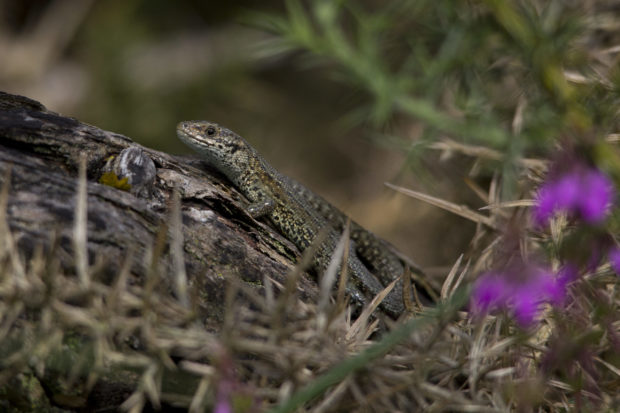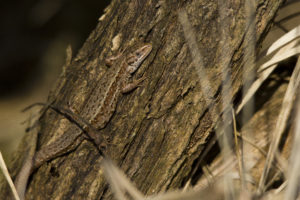The early lizard catches the sun

Spring seems to be peaking its head well above the parapet, with temperatures reaching a dizzying 15°C! All kinds of creatures are starting to wake up, with the year’s first brimstone butterflies making an appearance and bumblebees out looking for early blooms.
And if you look closely amongst the heather, you may notice some of our scaley wildlife emerging from their winter slumber too. We are lucky enough to have all 6 of the UK’s native reptile species within the Thames Basin Heaths Special Protection Area, so let’s kick things off with the common lizard. Also known as the viviparous lizard, this reptile actually incubates its eggs internally, ‘giving birth’ to tiny inch-long live young!
Common lizards can frequently be found scuttling around the heaths, gobbling up any spiders and insects they can get their teeth into. So keep your eyes peeled! I’ve already been lucky enough to see two of these lizards enjoying the sun, while out and about this year, with one big headed male sporting a very fetching blue tail. Colours vary wildly between individuals, from various shades of green, all the way to jet black.
Have you seen any reptiles (or amphibians) on the heaths, in your garden, or anywhere in the countryside? You can help contribute valuable information by submitting your sightings using this online recording tool, the Record Pool, a collaboration between Amphibian and Reptile Conservation (ARC) and Amphibian and Reptile Groups of the UK (ARG UK).
Catch me next time where I’ll be talking about the adder, a beautiful snake with an unfair image problem!
Warden Jamie

